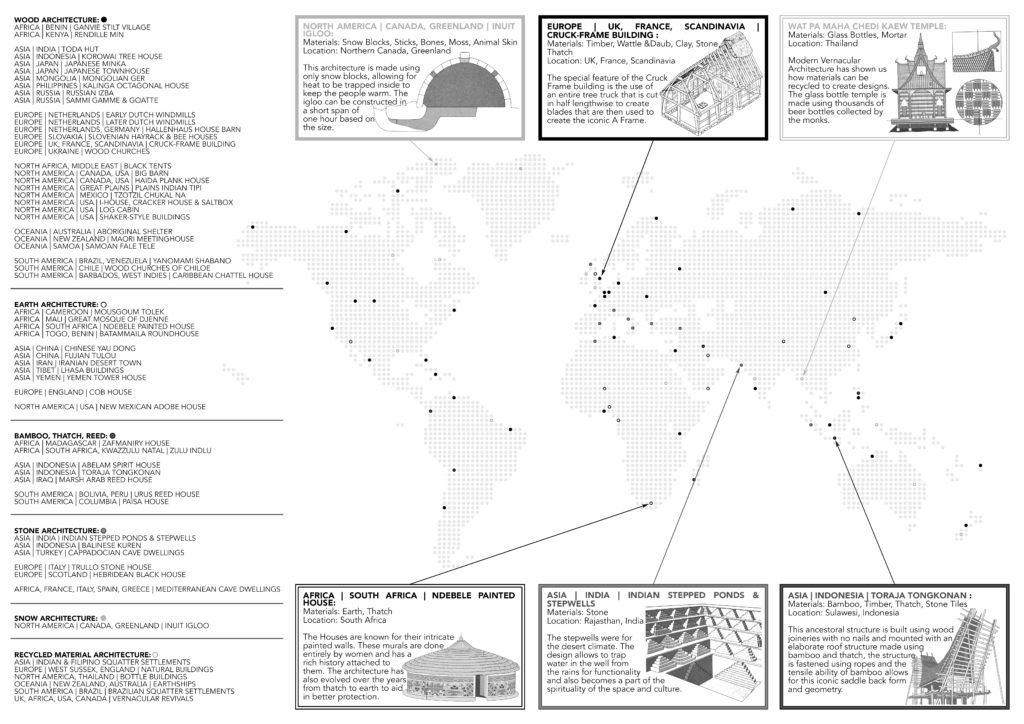This blog is a review of the book, Buildings without Architects: A Global Guide to Everyday Architecture by John May. The book is a culmination of 60+ different styles of vernacular architecture ranging from different materials and different regions of the world.
“Architecture should speak of its time and place, but yearn for timelessness.”
– Frank Gehry
What is Vernacular Architecture? Vernacular Architecture is the architecture of the people built by the people for the people. This manner of construction and design directly responds to the climate and the region it is constructed for.
The world we live in today is one large urban Metropolis, with all modern architecture following the same form and geometry, using the same factory-produced materials to create architecture with no thought given to the location, climate and culture. The resulting architecture fails to serve the needs of the community but more importantly fails to serve the climate it is designed for. This leads to a high energy bill, an extremely high carbon footprint and a structure that has a poor impact on the environment and the microclimate as a whole.
Throughout the book, the author tries to emphazise the importance of Vernacular architecture not only to the people but also to the climate. Indigenous architecture is a visual and tangible representation of the climate and the people of a particular region. The architecture is usually designed using local artisanal skills and materials that are very easy to access. This results in a large array of typologies that change from region to region showcasing the local skills and techniques. While there may be a few typologies that are similar in some aspects, they still create their own unique identity to ensure that the design is the best for their respective climate.

Vernacular architecture has evolved over thousands of years and is a product of generations of learning from mistakes to find the right technique to most efficiently use the available materials. But this in no manner means that the learning has stopped. There is still a lot more to learn and understand about materials as the exploration must never stop. And these techniques should be preserved and carried down through the generations allowing the modern world to learn from them.
The book beautifully addresses a large range of typologies, showcasing different materials and techniques of regions across the world. The book looks into the materials of Timber, Stone, Earth, Bamboo, Thatch, Reed, Snow and Recycled Materials. The book is filled with beautiful representations and drawings of these architectural marvels, showcasing and highlighting the joineries and history of each space. The book serves as an encyclopedia for these territories, for the user to draw inspiration from visuals and understanding provided by the author.
Vernacular Architecture is the answer to several of the issues we face today. To create architecture built from nature, for nature and one that can eventually go back no nature leaving no traces and possibly benefiting the land and the people along the way. The architecture of today needs to refocus on creating spaces that speak of the region, using modern-day technologies to create architecture that speaks timelessly of the culture, the people and most importantly the environment it is built for.
To conclude in the words of Hassan Fathy, “Build Architecture from what is beneath your feet”.
Additional Book to refer to:
Architecture without Architects: An introduction to Non-Pedigreed Architecture by Bernard Rudofsky.

